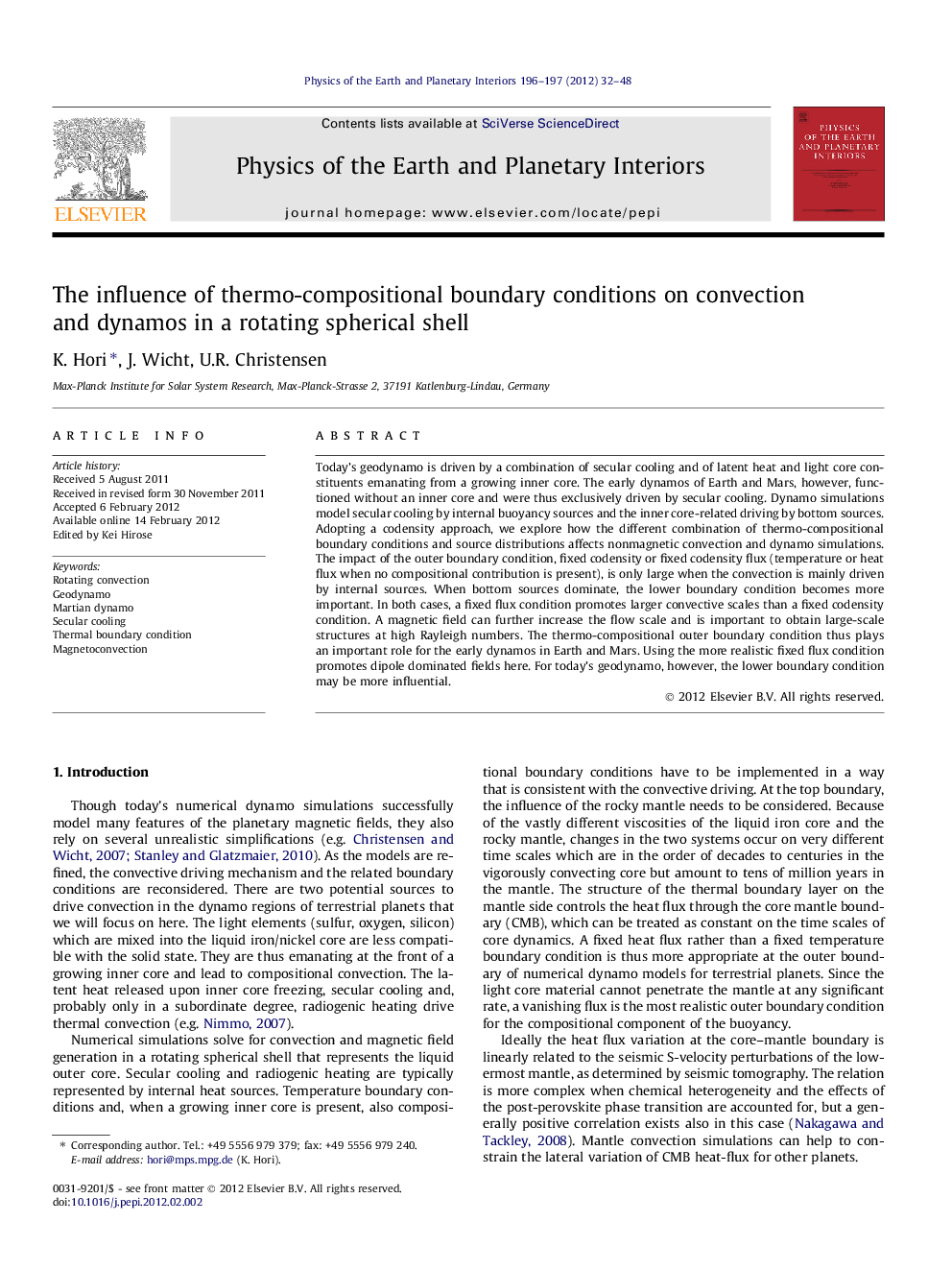| Article ID | Journal | Published Year | Pages | File Type |
|---|---|---|---|---|
| 4741792 | Physics of the Earth and Planetary Interiors | 2012 | 17 Pages |
Today’s geodynamo is driven by a combination of secular cooling and of latent heat and light core constituents emanating from a growing inner core. The early dynamos of Earth and Mars, however, functioned without an inner core and were thus exclusively driven by secular cooling. Dynamo simulations model secular cooling by internal buoyancy sources and the inner core-related driving by bottom sources. Adopting a codensity approach, we explore how the different combination of thermo-compositional boundary conditions and source distributions affects nonmagnetic convection and dynamo simulations. The impact of the outer boundary condition, fixed codensity or fixed codensity flux (temperature or heat flux when no compositional contribution is present), is only large when the convection is mainly driven by internal sources. When bottom sources dominate, the lower boundary condition becomes more important. In both cases, a fixed flux condition promotes larger convective scales than a fixed codensity condition. A magnetic field can further increase the flow scale and is important to obtain large-scale structures at high Rayleigh numbers. The thermo-compositional outer boundary condition thus plays an important role for the early dynamos in Earth and Mars. Using the more realistic fixed flux condition promotes dipole dominated fields here. For today’s geodynamo, however, the lower boundary condition may be more influential.
► We examine effects of uniform heat-flux boundary conditions on convection and dynamos. ► The flux condition at outer boundaries promotes larger flow scales for internal heating. ► The flux condition at inner boundaries promotes larger flow scales for bottom heating. ► In dynamos a magnetic field further increases the flow scales. ► CMB thermal conditions may have been more crucial for early cores of Earth and Mars.
